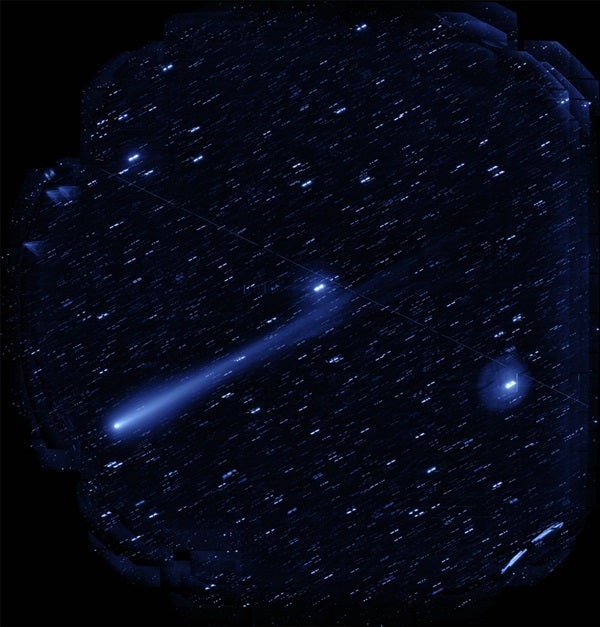The observation took place in the early morning of November 5, 2013, in Hawaii during a test of non-sidereal tracking, which follows an object that moves at a different rate than the stars. Since solar system objects such as comets and asteroids appear to move faster than more distant stars and galaxies, they require this special mode of telescope tracking, which allows observers to keep the target in view. An additional challenge for tracking Comet ISON was its low altitude of less than 30°. Nevertheless, the commissioning team was able to capture a clear image of the comet and its tails, including their faint parts, which extend more than 1° away from the Sun. At the time of the observation, Comet ISON was 106 million miles (170 million kilometers) from Earth and 81 million miles (130 million kms) from the Sun.
This image demonstrates some of HSC’s exceptional qualities: use of the large light-collecting power of the Subaru Telescope’s 8.2-meter primary mirror, a wide field of view, and sharp imaging capability. HSC’s wide field of view captures objects in an area equivalent to the size of nine Full Moons in one frame and does so with high sensitivity.
“In order to verify the performance of this camera with a solar system object as a target, we decided to observe Comet ISON,” said Satoshi Miyazaki from the National Astronomical Observatory of Japan (NAOJ). “This kind of object is tricky to track. Despite the challenges of tracking this comet, we were very happy to see the tails clearly shown in the image. We are delighted that we can share this image, which proves that HSC is capable of capturing images of solar system objects.”
“This image clearly shows the power of HSC on the Subaru Telescope,“ said Jun-ichi Watanabe from NAOJ. “The two distinct streaks of the tails might be from their dust and the gas, respectively. I am excited that this comet and its tail might be seen with binoculars or even with the naked eye.”










